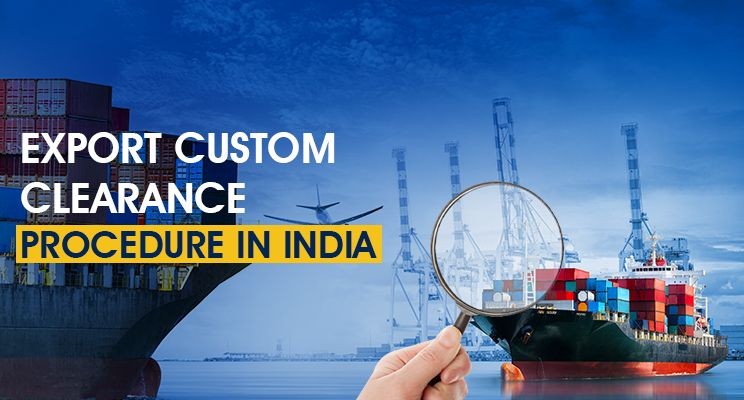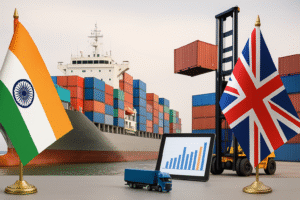
The Indian scenario
Customs Clearance is a complex and time-consuming process for every export business. In India, every consignment is manually examined to impose different kinds of export duties. Additionally, the documentation process and the export customs clearance also get complicated owing to:
- The high import tariffs
- Multiplicity of exemptions
- Export promotions.
However, post-pandemic, India is following strict measures to ensure smooth operations and functioning across all the customs locations pan India. Hence, it becomes critical for every export businessperson to get a good grasp of the export customs clearance procedure. In this blog, we will shed light on the key aspects — The procedure, documents required, and measures for smooth customs clearance.
The export custom clearance procedure
A] Registration of the exporter
To export the goods, an exporter must obtain a PAN-based Business Identification Number(BIN). They can obtain BIN through the Directorate General of Foreign Trade before filing a shipping bill to clear the exported goods by the customs. In the current pandemic-stricken scenario, the customs formations are displaying heightened sensitivity in handling cargo coming from the affected areas. In genuine cases, they are accepting delays in filing import declarations and waiving the late filing fees.
B] Processing of shipping bill for Non-EDI and EDI
According to the EDI System, the exporter must file the declarations in the prescribed format through the service centres of customs. Consequently, a checklist is generated to verify the data of the exporter/CHA. After completion of the verification, the data is submitted to the System via the Service Center operator. The system generates a shipping bill number that the exporter needs to endorse on the printed checklist. In the case of Non-EDI, the exporter/CHA must fill the shipping bills or bills of export in the format as mentioned in the Shipping Bill and Bill of Export (Form) regulations, 1991.
C] Quota allocation label
The exporter must paste the quota allocation label on the export invoice. They must enter the allocation number of the Apparel Export Promotion Council (AEPC) into the system during the time of shipping bill entry. The exporter must submit the quota certification of the export invoice with other original documents to the customs when the export cargo is being examined.
D] Arrival inspection of goods at docks
The goods arrive at the docks on the basis of their examination and inspection. The port authorities check the goods’ quantity along with the documents.
E] System appraisal of shipping bills
The system prepares a shipping bill on the basis of the exporter’s declarations without any human intervention.
F] Customs examination of export cargo
The Customs Officer verifies and checks the quantity of the goods that are actually received and entered into the system. They then mark the electronic shipping bill and also hand over all the original documents to the Dock Appraiser. The Customs Officer and the Dock Appraiser may inspect the shipment. The Customs Officer enters the examination report into the system. He then marks the electronic bill with all the original documents and a checklist to the Dock Appraiser. Next, he proceeds to allow ‘Let Export’ for the shipment and informs the exporter/agent.
G] Stuffing/loading of goods in containers
The exporter/agent gives the exporter’s copy of the shipping bill. This bill is to be signed by the Appraiser clearly mentioning ‘Let Export’ to the steamer agent. For the allowance of the shipment, The Customs Preventive Officer may further provide ‘Shipped on Board’ approval on the copy of the shipping bill.
H] Drawal of samples
The Customs Officer may proceed to draw two samples from the consignment but this process may vary on the COVID-19 situation. They prepare 3 copies of the test memo.
Original: To be sent along with the sample to the particular testing agency.
Duplicate: This is the Customs copy that is to be retained with the 2nd sample.
Triplicate: Is the Exporter’s copy.
I] Amendments or corrections
Any correction/amendments in the checklist developed after the filing of the declaration can be made at the service centre. For the goods that have not been given permission of Let Export’, amendments may be permitted by the Assistant Commissioner (Exports). But if the ‘Let Export’ order has already been submitted, amendments that were done may be permitted by the Additional/Joint Commissioner, Custom House, that is the in-charge of the export section.
J] Export of goods under claim for drawback
After the actual export of the goods, the process of the Drawback claim is processed via the EDI system through the officers of the ‘Drawback Branch’ on a first-come, first-served basis without filling any kind of separate form.
K] Shipping bills
The system generates the Shipping Bill in 2 copies: One of the two will be a Custom copy and the other one as an exporter copy. The Customs officer and the Custom House Agent sign the copies.
Documents required for the export custom clearance procedure
Three core documents are required to export the goods:
- Bill of Lading/Lorry Receipt/Airway Bill/Postal Receipt/Railway Receipt.
- Commercial Invoice cum Packing List (According to the Central Board of Excise and Customs circular under the Customs Act, separate commercial invoices and packing lists are permitted)
- Shipping Bill/Postal Bill of Export/Bill of Export
Other documents that exporters may require when shipping goods overseas.:
- Export order/purchase order
- Export license
- Commercial invoice
- Country of origin (COO) certificate
- Letter of credit from the importer’s bank
- Health certificates
- Dangerous goods forms(Required for those goods considered as dangerous)
- Bill of exchange
- Quality/inspection check
- Export general manifest
Measures for smooth customs clearance
Currently, the customs department provides a 24×7 custom clearance facility at all custom formations to avoid any type of supply chain disruption or disorder. Also, a dedicated one window COVID-19 helpdesk for EXIM trade has been created on the CBIC website for all the exporters and importers to provide easy and quick resolution for all issues. Regular coordination is thereby maintained with district administration and police authorities for the smooth functioning of EXIM cargo, and persons engaged in this process during the lockdown. The majority of the ports have been asked not to levy penalties, demurrage charges, fees, or rental on any port used for any delay.







